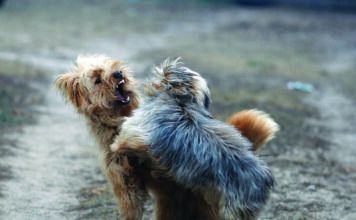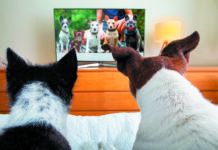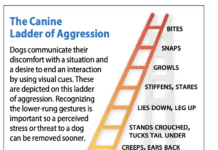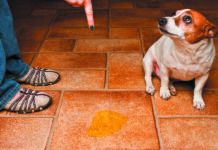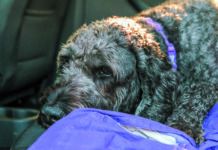Why Do Dogs Do That?
Why would a dog yell at the mail carrier day after day, even though the postal worker always comes at the exact same time and does the exact same thing at your front door? Why do some dogs take their food far from their bowl to eat, while others lick you for far longer than can comfortably be tolerated? Truth be told, they have a canine rationale for all their behaviors, and if you know it, you won’t find their actions so strange, or annoying.
4 Easy Tips for Making Your Dog’s Walks More Enjoyable
Imagine if each day you went to open up your favorite websites for news or new ideas, and the same articles kept popping up over and over, except for a couple of short bits off to the side. That’s how it is for a dog who is taken on the same route, or the same couple of routes, for all her walks. When a dog goes outside, she’s not just relieving herself. She’s reading her world—by sight and hearing but mostly through scent. If she pretty much has to keep “reading” the same thing over and over, life can feel awfully tedious. Here’s how to make your dog’s walks more enlivening.
When Training Dramatics Backfire—and When They Work
Your dog runs over to someone who doesn’t like dogs or worse, jumps on the person. Or he starts bothering another dog. Your instinct might be to yell at your pet to stop and make a lot of fuss with gesticulations. But all of that fanfare is counterproductive; the commotion only begets more commotion.
The puppy won’t pee outdoors
Q: We’ve always gotten dogs who were at least a year old but recently took in a 10-week-old puppy who won’t stop urinating in the house. I keep opening the back door to let her go do her business, but she just looks around and then comes back in. Even when I walk her, whether she “goes” is hit or miss. I’m getting annoyed. Any suggestions?
Two Kinds of Drugs for Behavior Problems
There are essentially two types of drugs for dogs who experience high enough levels of anxiety that behavior modification techniques alone don’t keep them feeling calm and secure. One type is often referred to as “in the moment” medication. It means the dog just needs a short-acting drug to help him in particular situations that unnerve him to the point that he becomes aggressive or shows other signs of extreme stress, like cowering or hiding. Such situations might include thunderstorms or having to be near other dogs, say, at the veterinarian’s office. The other type of medication is longer-acting, working around the clock to take the edge off a dog’s chronic anxiety. It operates “in the background,” so to speak.
When Doggie Day Care and Dog Parks Are the Wrong Choices
We think of dogs as social creatures, and rightly so. They are a species genetically primed for social engagement with others of their kind. But if a dog gets into a frightful scrape with another dog early in life, perhaps before she came to live with you, being around other dogs can unnerve her, truly making her miserable.
If Your Dog Could Have the Remote
Dogs most like to watch videos of…other dogs. So say the results of a detailed questionnaire answered by more than 1,200 people with canine pets. Second in interest to dog videos are videos of other animals, including wild animals (as in nature documentaries), cats, livestock, and squirrels. (Videos of people are way down on the list.) Reactions to what’s on the screen include dogs turning their head to the side or pricking their ears, vocalizing, approaching the screen and/or running away from it, looking behind it, and bringing toys over. The responses were collected by researchers at the University of Wisconsin-Madison School of Veterinary Medicine and published in Applied Animal Behaviour Science.
Dogs Dig It
Different breeds of dogs dig for different reasons. Terriers, originally bred to dig for varmints that burrow into the ground, might dig fast and furiously in the dirt — or bed linens — to work through their hereditary instinct. They’re figuratively engaging in the so-called appetitive phase of preda-
tory behavior.
How to Keep a Dog from Climbing the Canine Ladder of Aggression
Dogs don’t act aggressively to strut their stuff or show who’s dominant. That’s a human thing. Canine aggression is a response to what a dog perceives as a threat. With aggressive behavior, the dog is trying to deflect the threat and restore harmony. Dogs so want harmony, in fact, that most of the rungs on the Canine Ladder of Aggression, a graphic devised by British veterinary surgeon and behaviorist Kendal Shepherd, BVSc, are not acts of aggression at all but signs of appeasement. They include such behaviors as yawning, nose licking, and turning away. They all mean “I’m uncomfortable; you’re making me anxious. Can you please stop doing the thing that’s making me feel stressed and unsafe?”
Neighbor threatens to shoot aggressive dog
Q: My black Lab, about three years old, is very aggressive. While perfectly friendly once she knows you, she will nip strangers’ heels. But my bigger problem is that several times now, she has jumped on a smaller terrier who lives next door, actually biting that dog badly enough that it had to be taken to the vet to clean its wounds and perhaps get stitches. The last time it happened, my neighbor had the gun out and demands that I get rid of my dog or he will kill her. Unfortunately, I have never been around when all this happens. I should note that my dog is afraid of thunder and firecrackers and that this is the only dog she has ever bothered. I am in my 80s and live alone. I do not want to lose my pet. If you could help with suggestions, it would be very much appreciated.
Your Dog is Not Relieving Herself in the House to Get Back at You
If your potty-trained dog eliminates in your absence, it’s not to spite you or be vindictive about you leaving. It’s most likely because she feels panicked in your absence. In fact, that look on her face when you arrive back home is not remorse or guilt — it’s fear. She sees you’re angry at her and doesn’t understand why, since all she knows is that she has just been through an ordeal.
Does Your Dog Suffer from Motion Sickness in the Car, or is it Anxiety?
The image of a dog sticking his head out the car window is iconic. Even though it’s unsafe because it means he’s not safely secured in his seat, most dogs love to feel the wind on their face as the vehicle rushes along. Yet a small but significant minority of dogs feel nauseated during car rides, literally. They hunker down for what’s going to be a grim experience. They whine, pace, or smack their lips. Some drool or vomit.


